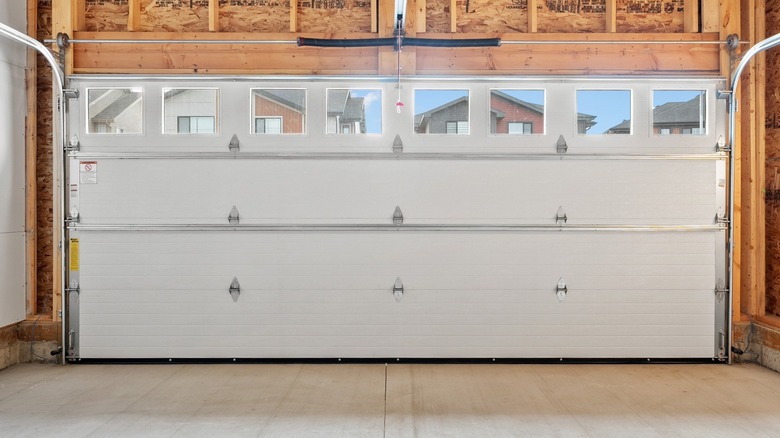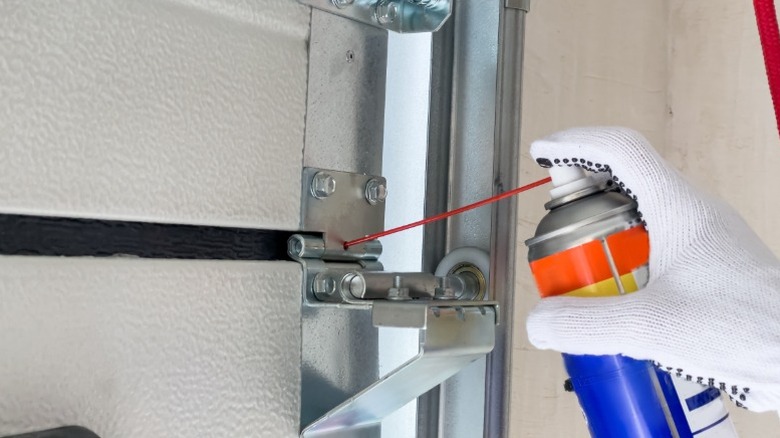No, You Shouldn't Grease Your Garage Door's Track - Here's What To Do Instead
Let's be honest, when your garage door starts squeaking, your first instinct is to grab a can of grease for a fix. That instinct has never been more wrong. Something in our DIY minds makes us believe that greasing equals less friction. It feels like the responsible, time and cost-saving fix. But sadly, it's not. And to state it emphatically, greasing your garage door's track does not make it operate smoother. It does quite the opposite, actually.
Think of your garage door tracks like train tracks. Yes, they guide the rollers, but they aren't meant to be slippery. Adding grease not only turns them into grime magnets but also collects dirt, dust, among other gunk. This contaminates the tracks, slowing your door down or even jamming it altogether. The result is that instead of smooth gliding, you get sticky starts, noisy clunking sounds, as well as extra wear and tear. But not to worry, you can avoid all this altogether without using any smart gadgets to help you upgrade your garage. With that said, here's what you can do instead.
Greasing the tracks won't save you, but greasing other parts might
To be fair, your instinct to grease things wasn't totally off. Don't get us wrong, your garage door does require some lubricant, just not the tracks. Generally, you should think twice before using WD-40 on your garage doors. Garage door tracks aren't designed for lubrication. Lubricants are designed for untreated metals, such as those you find on door hinges and knobs. The tracks are treated metals. They're meant to guide the rollers, not create a slick surface. As such, when you grease them, you're not helping the door move better. Instead, you're creating a sticky situation. Literally.
There are certain grease-friendly components on your garage door that can help matters. Lubrication is part of regular maintenance. You just need to know where to apply it. From how garage doors move, you'd notice that they slide up and down along metal tracks with wheels, joints, and other moving parts. These parts are safe for lubrication. To be clear, you oil the wheels, the joints, and the moving parts. So if you've already greased your tracks, just wipe them clean with a cloth and then move on to these parts.
Give your tracks a clean break and roll
Speaking of wiping it down clean, another sticky garage door fix is simply cleaning it. Now that we've established that there are other practical uses of WD-40 around the garage, one thing your garage door tracks actually need is a good cleaning. They're like runways. They don't need to be slippery, but they do need to be clear. When stuff like dust, cobwebs, and other contaminants clog up your rollers, they begin to bump, drag, and squeal. No grease in the world will fix that, as only a proper clean-up will.
To clean your garage door, start by using a dry cloth or a soft brush to knock out loose dirt. Proceed to grab a rag, and together with mild soap and water, wipe down the inside of the tracks. You don't have to soak it, as you need just enough dampness to lift the grime off the surface. Then, finish up with a dry towel to get rid of any leftover moisture.


